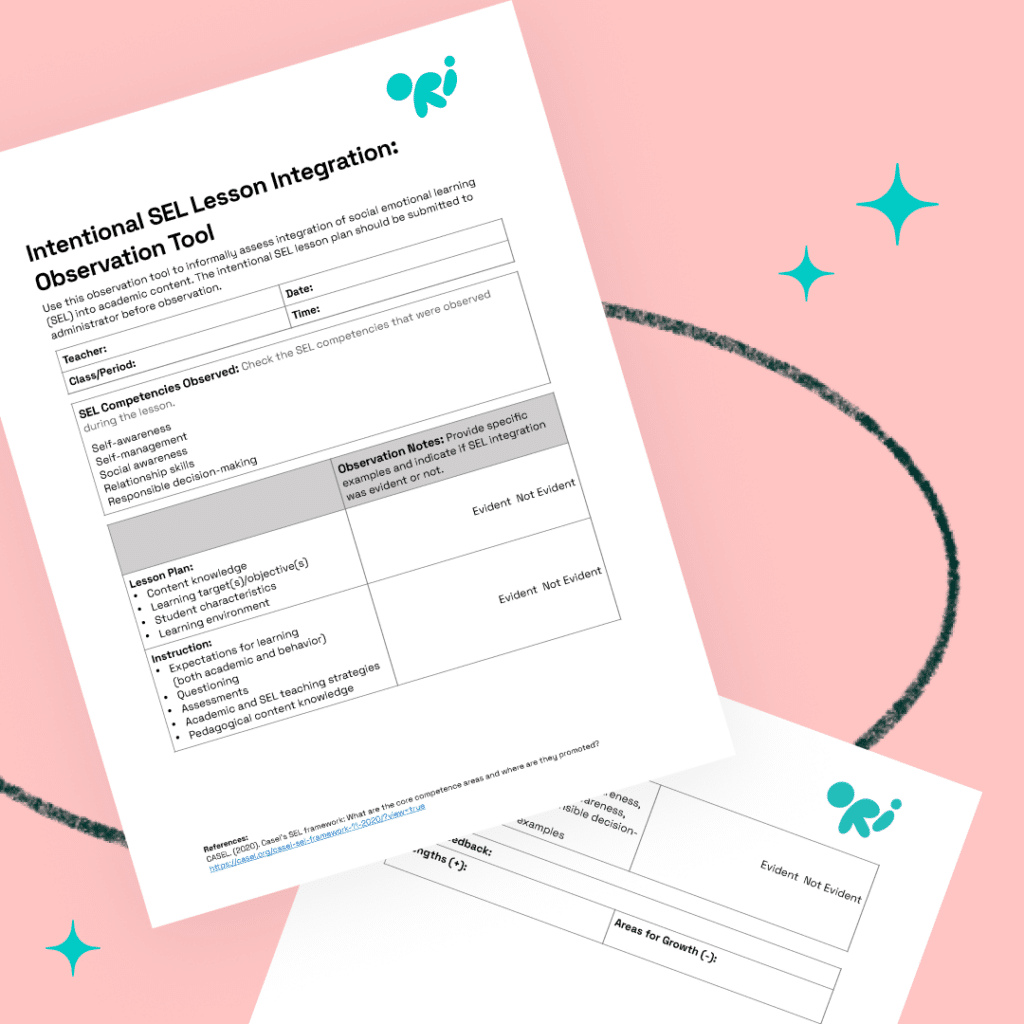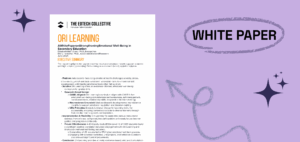Emotional well-being plays a vital role in shaping students’ abilities to understand and manage emotions, build relationships, and make responsible decisions. The integration of emotional well-being into educational settings requires effective frameworks, reliable tools to assess emotional well-being, and adaptable program strategies to ensure meaningful outcomes. This discussion highlights key emotional well-being metrics and approaches, exploring frameworks like DESSA, the benefits of combining qualitative and quantitative methods, and the importance of embedding emotional well-being into school culture. It also delves into overcoming challenges such as subjective assessments and standardization issues, offering innovative solutions to maximize emotional well-being’s long-term impact on students’ academic and personal success.
Frameworks and Models for Emotional Well-Being Measurement
Measuring emotional well-being effectively starts with choosing the right framework. A popular model is the Devereux Student Strengths Assessment (DESSA). It breaks emotional well-being into eight key areas:
- Self-awareness: The ability to recognize and understand one’s own emotions, strengths, and limitations. It lays the foundation for personal growth and emotional intelligence.
- Social awareness: The skill to empathize and understand the emotions, needs, and perspectives of others, fostering inclusivity and effective communication.
- Self-management: The capacity to regulate emotions, manage stress, and set and achieve personal goals, enabling resilience and focus.
- Goal-directed behavior: The ability to plan and work towards objectives with persistence, supporting academic and personal success.
- Relationship skills: Skills to establish and maintain healthy, rewarding relationships through communication, cooperation, and conflict resolution.
- Personal responsibility: Accountability for one’s actions and decisions, fostering trust and dependability in social and academic settings.
- Decision-making: The capacity to make constructive, ethical choices that consider potential outcomes and the well-being of others.
- Optimistic thinking: A positive outlook that motivates perseverance and problem-solving, especially in challenging situations.
These areas collectively offer a comprehensive framework for assessing and improving social-emotional skills across diverse environments. Emotional well-being assessment measures provide various evidence-based tools that evaluate student competencies, aligning with educational standards and frameworks.
Another approach involves evidence-based frameworks that ensure consistent metrics. These are vital for making meaningful comparisons across schools or districts. When frameworks are clear and aligned with goals, implementation tends to be smoother and results more reliable.
Organizations like CASEL also emphasize the importance of grounding measurement in established emotional well-being frameworks. They argue this makes it easier to assess outcomes and improve program delivery. CASEL’s research highlights that these frameworks don’t just guide assessment—they improve emotional well-being programs overall.
The choice of framework matters because it shapes the entire measurement process. Whether it’s DESSA or another evidence-based model, using a structured approach ensures that emotional well-being initiatives are grounded in clear, actionable data.
See how Ori Learning automates emotional well-being progress measurement.
Strategies and Tools for Emotional Well-Being Assessment Measures
Effective emotional well-being measurement relies on the right tools and strategies to assess emotional well-being. Quantitative tools, like the DESSA, use structured surveys to assess specific skills like self-management and social awareness. These tools provide consistent, scalable data across different groups. Other validated instruments include self-assessments and teacher ratings, which are commonly used to track student progress.
For a fuller picture, assessing emotional well-being through qualitative approaches like interviews and classroom observations is helpful. They capture nuances that numbers alone can’t. For example, teacher interviews can reveal how emotional well-being skills translate into daily interactions, while observations can show how students apply skills in real-time situations.
Emerging technologies are also changing emotional well-being measurement. AI and data analytics can analyze trends from large datasets, making it easier to spot patterns over time. These tools are still developing but show promise for scaling emotional well-being assessments in the future.
Combining quantitative and qualitative methods is becoming a best practice. This hybrid approach ensures both measurable outcomes and contextual understanding, making emotional well-being evaluation more effective and actionable.
Free Emotional Well-Being Integration Observation Tool for Administrators
Our Intentional Emotional Well-Being Lesson Integration Checklist is designed to support educators in effectively embedding emotional well-being into academic content.
Developed with insights from the latest emotional well-being frameworks, this tool will help teachers and school leaders ensure that emotional well-being competencies are being addressed with intentionality in the classroom.
With this checklist, administrators can confidently assess emotional well-being integration across core competencies such as self-awareness, self-management, social awareness, relationship skills, and responsible decision-making.

Challenges and Solutions in Measuring Emotional Well-Being
Measuring emotional well-being comes with several challenges. One issue is the subjectivity in self-reported assessments of emotional development. Students and teachers may overestimate or underestimate skills like empathy or self-awareness, leading to inconsistent data. Observer bias in classroom evaluations is another problem, as personal perspectives can skew results.
Another challenge is the lack of standardization. emotional well-being definitions and practices vary across schools and regions, making it hard to compare data or track progress consistently. This variation also complicates efforts to scale emotional well-being programs effectively.
Solutions are emerging to address these issues. Hybrid assessment models that combine quantitative tools with qualitative methods offer a more balanced approach. For instance, pairing surveys with teacher interviews can reduce reliance on subjective data.
Training for educators is another important step. School leaders also play a crucial role in implementing and assessing emotional well-being programs within their districts. When teachers understand how to use emotional well-being tools properly, they produce more accurate and consistent data.
Finally, better alignment of emotional well-being frameworks and tools can reduce variability. Standardizing core metrics across programs ensures data is comparable, regardless of location or implementation method. These steps make emotional well-being measurement more reliable and actionable.
You can measure emotional well-being using structured frameworks like DESSA, surveys, teacher ratings, and qualitative methods like interviews and observations. Emerging tools like AI and data analytics can also help track trends and outcomes effectively.
Assess well-being through tools like surveys, self-assessments, and interviews to measure social and emotional development. These capture emotional regulation, empathy, and resilience. Combining qualitative and quantitative data gives a complete picture of social and emotional health.
The four major assessments for emotional well-being competencies include self-assessments, teacher ratings, structured surveys, and observational tools. Combining these methods ensures reliable data and captures both quantitative metrics and nuanced insights.
The emotional well-being rating scale evaluates skills like self-awareness, emotional development, relationship building, and decision-making. Tools like DESSA use this scale to provide consistent, actionable insights into students’ social-emotional growth.
A Comprehensive Solution for Emotional Well-Being Measurement
The growing emphasis on social-emotional learning highlights the need for effective emotional well-being assessment measures and strategies. However, the challenges are evident—subjectivity, inconsistent frameworks, and the complexity of integrating emotional well-being into diverse educational settings all present obstacles. Despite these hurdles, the benefits of a robust emotional well-being program are undeniable. When implemented well, emotional well-being fosters skills like empathy and decision-making, translating to long-term academic and personal success. The critical question remains: how can schools adopt and track emotional well-being programs effectively without overwhelming educators or sacrificing precision?
Ori Learning provides a clear answer to these challenges. Designed with both students and educators in mind, Ori’s online platform integrates emotional well-being and transition curricula into a single, streamlined system. It addresses subjectivity by using consistent, research-based frameworks that educators can rely on. The platform also ensures adaptability, offering flexible modules that cater to diverse school environments while maintaining core emotional well-being principles. Teachers can access everything they need in one place, from structured lesson plans to tools for tracking student progress.
If you’re looking for an effective way to implement emotional well-being in your school while simplifying measurement and ensuring positive outcomes, Ori Learning is ready to help. Explore how this platform can transform your emotional well-being initiatives by visiting Ori Learning. Empower your students and educators to build the skills that matter most—both in and out of the classroom.




